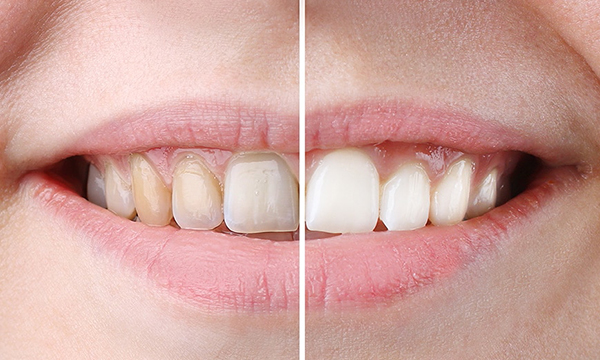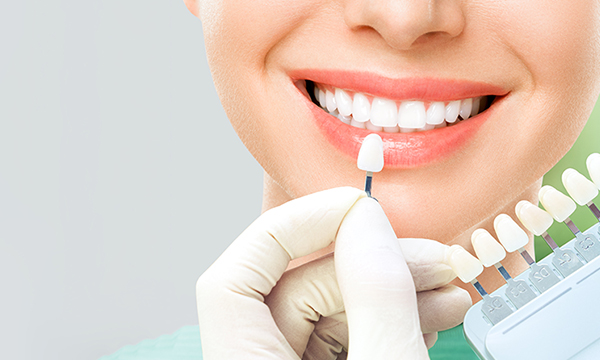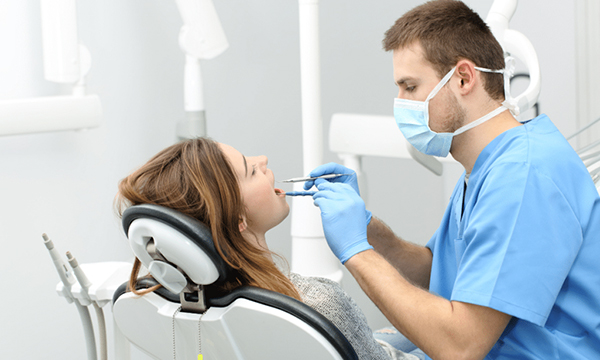A radiant smile goes beyond just having pearly white teeth; it’s about having healthy gums that support and enhance the beauty of your smile. Unfortunately, gum health is often overlooked, with many people focusing only on their teeth. However, gums are the foundation of oral health. They hold your teeth in place, protect the roots, and help keep bacteria at bay. Maintaining healthy gums is crucial for a beautiful smile and overall well-being. At Aurora Smiles, we believe that understanding and caring for your gums is key to long-term oral health. This guide provides comprehensive insights into gum health, common gum issues, and practical tips for maintaining healthy gums to ensure your smile remains bright and confident.
Understanding Gum Health
Your gums, medically known as gingiva, are the pink tissues that cover the bones of your teeth. These tissues act as a protective seal around your teeth, shielding them from harmful bacteria. They also support the structures that hold your teeth firmly in place. Healthy gums should be firm, tightly bound to your teeth, and have a coral pink colour. When gums are healthy, they effectively perform their role in maintaining oral health by:
- Providing a Barrier Against Infection: Gums form a barrier that prevents bacteria from entering the deeper parts of your oral cavity. This helps protect the roots of your teeth and the bone that supports them from infections that can lead to tooth decay or loss.
- Maintaining Tooth Stability: Gums anchor your teeth to your jawbone, providing the stability needed for biting and chewing. Without this support, teeth can become loose or even fall out.
- Preventing Bone Loss: Healthy gums protect the underlying bone structures. When gum health deteriorates, it can lead to bone loss, which in turn causes teeth to become unstable.
In addition to these functions, healthy gums contribute to a pleasing smile. They frame your teeth nicely, making your smile look attractive and complete. Ignoring gum health can lead to serious dental problems and compromise your overall well-being.
Common Gum Issues
Gum problems are common and can affect anyone, regardless of age. Understanding these issues and their signs is essential for early detection and treatment. Some of the most common gum issues include:
- Gingivitis: Gingivitis is the earliest stage of gum disease, characterised by red, swollen gums that may bleed when you brush or floss. It’s primarily caused by plaque buildup – a sticky film of bacteria that forms on the teeth. If left untreated, gingivitis can progress to more severe forms of gum disease. The good news is that gingivitis is reversible with proper oral hygiene and professional dental care.
- Periodontitis: This is a more advanced stage of gum disease that occurs when gingivitis is not treated. Periodontitis affects the tissues that support your teeth, leading to the formation of pockets between the gums and teeth that can become infected. As the disease progresses, these pockets deepen, and the bone that holds the teeth in place can be destroyed. Signs of periodontitis include persistent bad breath, receding gums, and loose teeth. Periodontitis requires professional treatment to manage and prevent tooth loss.
- Receding Gums: Receding gums occur when the gum tissue pulls back from the teeth, exposing more of the tooth or its root. This can lead to increased sensitivity, especially to hot or cold foods and drinks, and can make teeth appear longer. Gum recession can be caused by aggressive brushing, gum disease, or the natural ageing process. Receding gums can also increase the risk of tooth decay and other oral health issues.
- Bleeding Gums: If your gums bleed when you brush or floss, it may be a sign of gum disease. While occasional bleeding might result from brushing too hard, frequent bleeding indicates that your gums are not healthy. Bleeding gums should never be ignored, as it could be an early sign of gingivitis or periodontitis.
- Swollen or Tender Gums: Swelling, tenderness, or pain in the gums can indicate an infection or irritation. This could be due to plaque buildup, food particles stuck in the gums, or more serious gum disease.
Recognising these signs early and seeking professional care can prevent minor gum problems from becoming serious oral health issues.
Tips for Maintaining Healthy Gums
Maintaining healthy gums is essential for a bright smile and overall well-being. By adopting a consistent oral hygiene routine, you can prevent gum disease and keep your gums in optimal condition. Here are some practical tips to help you maintain healthy gums:
- Brush Your Teeth Properly: Brushing your teeth twice a day is one of the most effective ways to remove plaque and prevent gum disease. Use a soft-bristled toothbrush and fluoride toothpaste. Hold the toothbrush at a 45-degree angle to your gums and gently brush in a circular motion. Be sure to brush all surfaces of your teeth, including the outer, inner, and chewing surfaces. Don’t forget to brush your tongue to remove bacteria and freshen your breath.
- Floss Daily: Flossing removes plaque and food particles from between your teeth and along the gumline, areas where your toothbrush can’t reach. To floss properly, use about 18 inches of floss, winding most of it around each middle finger, leaving about an inch or two to work with. Gently slide the floss between your teeth, curve it around each tooth, and clean under the gumline. Use a fresh section of floss for each tooth to avoid spreading bacteria.
- Use Mouthwash: Antibacterial mouthwash can help reduce plaque, prevent gum disease, and freshen your breath. Look for mouthwashes that are specifically formulated for gum health. Rinse with mouthwash after brushing and flossing to wash away any remaining bacteria and food particles.
- Stay Hydrated: Drinking water throughout the day helps rinse away food particles and bacteria that can lead to gum disease. Water also promotes saliva production, which is essential for neutralising acids and maintaining a healthy mouth. Saliva helps wash away food particles, reducing the risk of plaque buildup.
- Eat a Balanced Diet: A diet rich in vitamins and minerals supports gum health. Foods high in vitamin C, such as citrus fruits and leafy greens, help strengthen gums and prevent gum disease. Calcium-rich foods like dairy products help maintain strong teeth and bones. Avoid sugary snacks and drinks, which can lead to plaque buildup and gum problems.
- Avoid Tobacco Products: Smoking and using other tobacco products are major risk factors for gum disease. Tobacco use weakens your immune system, making it harder for your body to fight off a gum infection. It also reduces blood flow to the gums, which can slow down the healing process. Quitting smoking can significantly improve your gum health and reduce your risk of gum disease.
- Regular Dental Check-ups: Visit your dentist at least twice a year for routine check-ups and professional cleanings. Dental cleanings remove tartar that can’t be removed by brushing and flossing. Your dentist will also check for early signs of gum disease and other oral health issues. Early detection and treatment can prevent serious problems and maintain the health of your gums.
Advanced Care for Gum Health
In addition to daily oral hygiene practices, some people may need advanced care to maintain or restore gum health. This is especially true for those with a history of gum disease or other oral health issues. Here are some advanced care options:
- Scaling and Root Planing: This deep-cleaning procedure is used to treat gum disease. Scaling removes plaque and tartar from below the gumline, while root planing smooths the root surfaces to help the gums reattach to the teeth. This procedure helps reduce gum inflammation and prevent further progression of gum disease.
- Antibiotic Treatments: In cases of severe gum infection, antibiotics may be prescribed to help eliminate bacteria and control infection. These can be in the form of oral tablets or topical gels applied directly to the gums. Antibiotics can be used alone or in combination with other treatments for optimal results.
- Laser Therapy: Laser therapy is a modern, minimally invasive treatment option for gum disease. It targets and removes infected gum tissue and bacteria, promoting the healing of the gums and reducing pocket depth. Laser therapy is precise and can result in less discomfort and faster recovery compared to traditional methods.
- Gum Grafts: For those with receding gums, gum graft surgery can help restore lost gum tissue. This procedure involves taking tissue from another part of the mouth, such as the roof of the mouth, and attaching it to the affected area. Gum grafts can protect exposed tooth roots, reduce sensitivity, and improve the appearance of your smile.
- Flap Surgery: In severe cases of periodontitis, flap surgery may be necessary. This procedure involves lifting the gums to remove tartar buildup and then suturing them back into place to fit snugly around the teeth. This helps reduce pocket depth and restore gum health.
These advanced care options, combined with good oral hygiene practices, can effectively manage gum health and prevent serious dental problems.
The Connection Between Gum Health and Overall Health
Gum health is closely linked to overall health, and issues with your gums can have far-reaching consequences. Research has shown that gum disease is associated with several systemic conditions, including:
- Heart Disease: Studies suggest that gum disease increases the risk of heart disease. The bacteria from infected gums can enter the bloodstream, causing inflammation in blood vessels, which may lead to heart attacks or strokes. Maintaining healthy gums may reduce your risk of cardiovascular problems.
- Diabetes: People with diabetes are more prone to gum disease, and gum disease can make it harder to control blood sugar levels. This bidirectional relationship means that managing gum health is crucial for people with diabetes to maintain overall health and prevent complications.
- Respiratory Problems: Inhaling bacteria from infected gums can lead to respiratory infections such as pneumonia, especially in older adults and those with weakened immune systems. Healthy gums help protect against these risks by preventing the spread of harmful bacteria.
- Pregnancy Complications: Pregnant women with gum disease are at higher risk of complications such as premature birth and low birth weight. Hormonal changes during pregnancy can make gums more susceptible to infection, so maintaining good oral hygiene is essential for both maternal and foetal health.
- Alzheimer’s Disease: Emerging research suggests a link between gum disease and Alzheimer’s disease. Chronic inflammation from gum disease may contribute to the development of neurodegenerative conditions. While more research is needed, maintaining gum health could be a factor in reducing the risk of Alzheimer’s.
Understanding these connections highlights the importance of maintaining gum health not just for a beautiful smile, but for overall health and well-being.
Conclusion
Healthy gums are the foundation of a beautiful and confident smile. By understanding the role gums play in oral health, recognising common gum issues, and following practical tips for maintaining healthy gums, you can enjoy a lifetime of smiles. Whether you’re focusing on daily oral hygiene practices or considering advanced care options, Dentist in chermside is here to support you every step of the way. Remember, a healthy smile begins with healthy gums. Take action today to protect your gums and enjoy the benefits of a healthier, happier life!
FAQ
Gum health is crucial for a beautiful smile because gums provide the foundation that holds your teeth in place. Healthy gums are firm and pink, enhancing the appearance of your teeth and preventing issues like gum recession and tooth loss. When gums are healthy, they frame your teeth nicely, contributing to an overall aesthetic look. Unhealthy gums can lead to problems such as gum disease, which can cause bleeding, swelling, and bad breath, all of which can detract from the beauty of your smile.
To maintain healthy gums, it’s recommended to brush your teeth at least twice a day using a soft-bristled toothbrush and fluoride toothpaste. Brushing helps remove plaque that can lead to gum disease. Flossing once a day is equally important as it removes plaque and food particles from between your teeth and under the gumline. Consistent brushing and flossing are essential for preventing gum disease and maintaining overall oral health.
If your gums bleed when you brush or floss, it’s a sign that they may not be healthy. Bleeding gums can be an early indicator of gingivitis or gum inflammation. Don’t stop brushing and flossing, but be gentle. Consider using a soft-bristled toothbrush and floss carefully. If the bleeding persists, schedule an appointment with your dentist. Persistent bleeding may require professional evaluation and treatment to prevent further complications.









